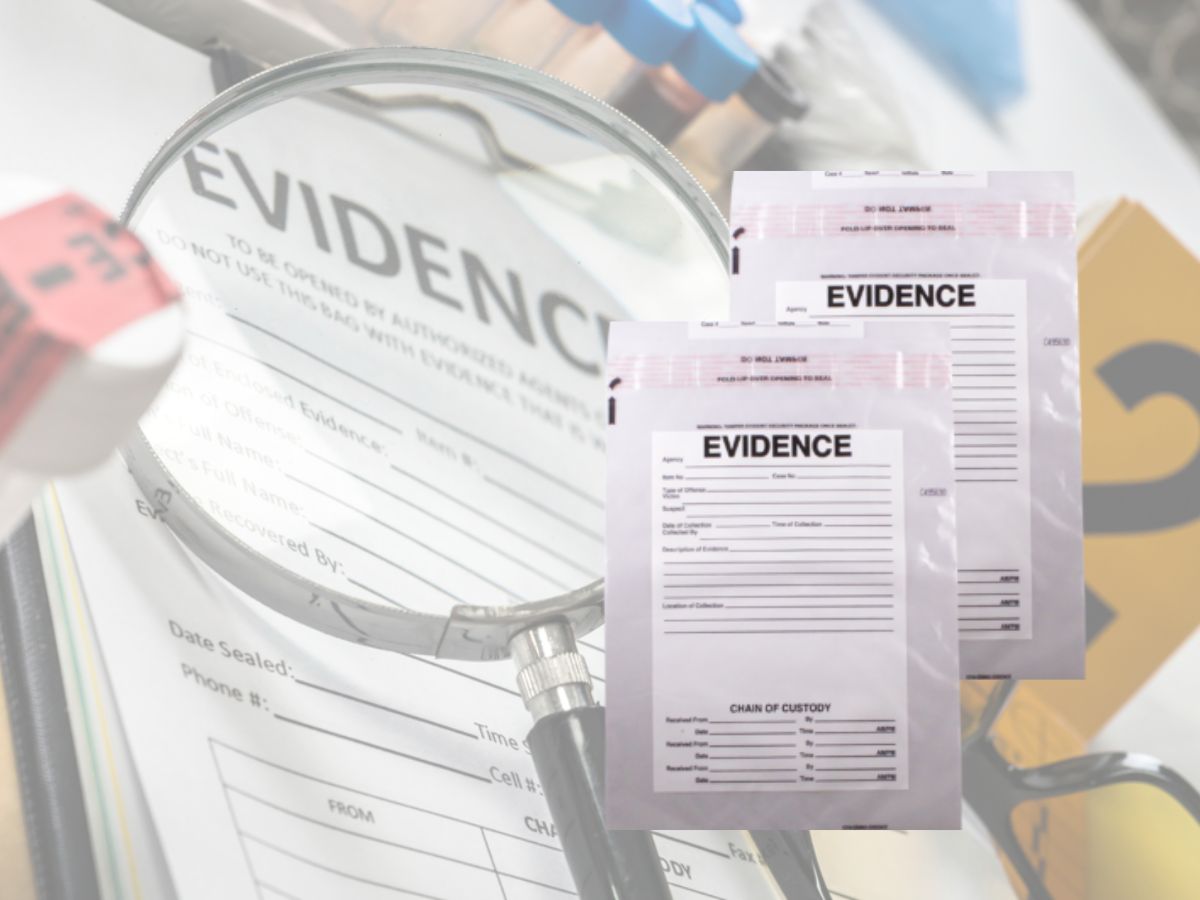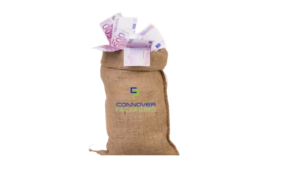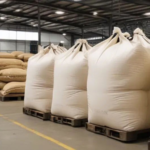
Key Benefits of Using Forensic Bags in Evidence Storage

In the intricate world of criminal investigation, preserving evidence is of paramount importance. This evidence, when stored and presented correctly, can be the turning point in a court case, establishing guilt or proving innocence. With technological advancements, Forensic Bags have emerged as an indispensable tool in evidence storage. Forensic evidence plays a pivotal role in the justice system. Whether it’s to determine the guilt or innocence of an individual or to dive deeper into an unresolved mystery, the integrity of this evidence is paramount. One key component ensuring this integrity is the storage medium used – introducing the Forensic Bags. If you’re unfamiliar with these game-changers, you’re in the right place.
Today, we will discuss the key benefits of using Forensic Bags in evidence storage. In this article, we’ll delve deeper into the many benefits of using these specially designed bags. Whether you’re a professional in the field or just someone curious about the criminal justice process, this guide will shed light on a crucial aspect that often goes unnoticed.
What Are Forensic Bags?
Forensic bags, often referred to as crime scene evidence bags or evidence storage bags, are specially designed storage solutions intended to safely store and protect evidence. They come in various sizes and types, tailored to the specific kind of evidence they are meant to hold, be it physical items, biological samples, or electronic devices.
Key Uses and Features Protection from Contamination:
Forensic bags act as a barrier against external contaminants. This is vital, especially for biological evidence like hair, blood, or tissue samples. Any contamination can distort forensic results, potentially jeopardizing a case.
Tamper-Evident Seals: These bags typically come with tamper-evident seals. Once sealed, any attempt to access the contents unauthorized will leave visible signs. This ensures that the evidence inside hasn’t been tampered with, preserving its integrity.
Documentation and Labeling: Forensic bags come with designated spaces for labels and documentation. This allows for the inclusion of essential details such as the date of collection, the identity of the collecting officer, case number, and a description of the evidence. This assists in maintaining a clear chain of custody.
Transparency: Some forensic bags are transparent, enabling the contents to be viewed without opening the bag. This feature is particularly helpful during preliminary inspections or when multiple pieces of evidence need to be quickly identified.
Versatility: Evidence comes in all shapes and sizes. Accordingly, forensic bags are available in various dimensions and materials to accommodate different types of evidence – from tiny shards of glass to clothing items.
The Role of Forensic Bags in the Justice System
The justice system hinges on the veracity of evidence. Forensic bags play a pivotal role in upholding this veracity. Their design and functionality ensure that evidence is stored in a way that its authenticity remains unquestionable. For instance, consider a scenario where DNA evidence from a crime scene is crucial to identifying a perpetrator. If this evidence is stored inappropriately and gets contaminated, it could lead to false results, potentially convicting an innocent person or letting the guilty party go free. Forensic bags, with their protective and tamper-evident features, mitigate such risks. Furthermore, in court, the defense can challenge the integrity of evidence. If there’s any suspicion or indication of tampering, it can undermine the prosecution’s case. The tamper-evident nature of forensic bags acts as a safeguard against such challenges.
1. Ensures Evidence Integrity
Every crime scene tells a story. But for that story to be recounted accurately in the courtroom, the evidence must remain pristine. Forensic Bags, commonly known as crime scene evidence bags, play an essential role in this. They’re meticulously designed to ensure that evidence remains untouched and uncontaminated. This protective barrier ensures that the evidence, be it a hair strand, fabric, or a fingerprint, remains in the exact condition as when it was collected. In essence, it provides a snapshot in time, undisturbed and unchanged.
2. Tamper-Evident Features
We live in an era where the integrity of evidence can sometimes be questioned, mainly due to concerns about tampering. Forensic evidence bags come equipped with tamper-evident features. Once these bags are sealed, any unauthorized access or tampering attempts become immediately evident. This is not just about physical protection; it’s about maintaining public trust in the justice system by ensuring that evidence is handled transparently and honestly.
3. Organized Evidence Storage
Forensic professionals know the importance of organization. An organized evidence system reduces the chances of errors, mix-ups, or lost items. Forensic Bags facilitate this organization. With provisions for labeling, dating, and cataloging, agencies can maintain a streamlined evidence storage system. This efficiency not only speeds up the investigative process but also ensures that every piece of evidence is accounted for.
4. Provides a Clear Chain of Custody
One of the most potent arguments a defense can present in court is questioning the chain of custody of evidence. Evidence Storage Bags, by their very nature, provide a transparent and traceable chain of custody. Each sealed and logged bag creates a documented trail, making it easy to trace the evidence’s journey from the crime scene to the courtroom. This robust process fortifies the prosecution’s case and establishes credibility.
5. Cost-Effective Solution
Budget constraints can often hamper investigative processes. But when it comes to evidence storage, Forensic Bags offer an economically viable solution. These bags, while ensuring top-notch quality and security, are also cost-effective. Agencies no longer need to invest in heavy-duty storage systems or containers, which might not offer the same level of protection.
6. Easy to Transport
In the investigative world, evidence often needs to move – from the crime scene to the lab, from the lab to storage, and eventually to the courtroom. Crime scene evidence bags, with their compact and lightweight design, ensure that this transportation is hassle-free. Their design ensures that evidence, big or small, can be transported without any risk of contamination or damage.
7. Environmentally Friendly Options
In today’s environmentally-conscious world, sustainability is a priority. Leading manufacturers, like Connover Packaging, are stepping up by offering Forensic Bags made from recyclable materials. As the criminal justice system works towards ensuring justice, it’s also playing its part in ensuring a sustainable future.
8. Streamlined Documentation
An added benefit of Forensic Bags is the provision for streamlined documentation. With dedicated sections for noting down critical details related to the evidence, these bags ensure that all pertinent information is available at a glance. This can significantly speed up the review process, especially when multiple parties, such as lawyers, forensic experts, and investigators, need to access the information.
9. Versatility Forensic Bags are versatile.
They come in various sizes and designs, suitable for storing different types of evidence. Whether it’s electronic items, clothing, or biological samples, there’s a forensic bag designed to store it correctly.
In Conclusion
Forensic Bags have revolutionized the way evidence is stored and handled. Their benefits, ranging from ensuring evidence integrity to streamlining documentation, make them an invaluable tool in modern-day criminal investigations. As the justice system continues to evolve, tools like these, especially those from trusted suppliers like Connover Packaging, are paving the way for more efficient, transparent, and trustworthy processes. The justice system’s behind-the-scenes intricacies might often go unnoticed by the general public. Still, innovations like Forensic Bags are continually enhancing its reliability, ensuring that justice is not just served but served right.
Share:
Get A Quick Quote
Social Media
Most Popular
Categories
Tags
Related Posts

Protecting Your Assets: How Payroll Deposit Bags Can Prevent Theft and Fraud
In the world of business, trust and security are paramount. As a business owner or manager, you work hard to ensure that your operations run

A Step-by-Step Guide on How to Organize Payroll with Payroll Bags
Managing payroll can be a daunting task for any business, big or small. Keeping track of employee wages, taxes, and other deductions requires meticulous organization

The Ultimate Guide to Organizing and Storing Soil Bags
If you’re a gardening enthusiast, you know how important it is to have good-quality soil for your plants to thrive. Soil bags, whether they be



